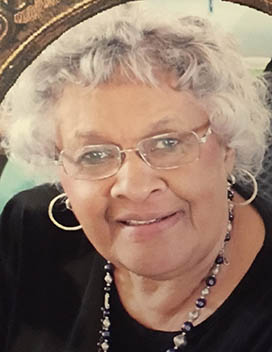Judy Moore: African American Amish in America
Published 11:00 am Thursday, July 20, 2023
|
Getting your Trinity Audio player ready...
|
Over the last few years my mind has pondered the question if there are African American Amish in America and the answer is yes. Although the many Amish who came here from Europe, mainly from Switzerland in the 18th and 19th centuries to escape religious persecution and to freely worship their faith were white, blacks do practice the faith.
Black Amish people practice the same beliefs as their white brothers and sisters such as dressing plainly, limited use of technology and a commitment to community and family. While there are no official records of the number of black Amish people in the U. S. there are estimations that several hundred individuals live in Amish communities all over the country, mainly in Ohio, Indiana and Pennsylvania.
Subsequently, some African American people are descendants of former slaves who joined the Amish after emancipation while others chose to convert to their way of life. In fact, the first known African American Amish person was Moses Shirley, who in 1791 was born into slavery in Virginia. Bishop Jacob Shenk converted Mr. Shirley to the Amish faith. Shirley later moved to Ohio where he was ordained as a minister in the Amish church. A well respected member of the Amish community, his descendants are still active in the black Amish community today. Even though many blacks are welcomed into the Amish community, it was not always the case. In the late 1800s and early 1900s, many Amish churches adopted a segregation policy which prohibited African Americans from joining their communities.
This was motivated partly by the desire to protect themselves from the racism and discrimination that was prevalent at the time. Despite this, some blacks were able to join the Amish through marriage or by acceptance as converts. The policy ended in the mid 1900s and blacks were more welcome into the Amish churches.
In order for blacks or anyone Englischer (non Amish) to join the Amish church, the following requirements are necessary. First, get involved in the community’s practices. Second, study the culture, rituals and language and third, commit to receive the baptism sacrament. The Ordnung is a book that the Amish follow which details how they should live their everyday lives. In addition, the church elders would have to acknowledge the outsider’s commitment to the Amish life and that the outside has earned a position in the church.
Even though African Americans practice the same customs as their white counterparts, how they worship through song in church and express their culture differs. African American Amish not only sing the traditional hymns but have their own gospel music style, which combines both Amish and black American traditions when praising God. Also, their main language spoken is African American Englsih “AAE”, which preserves their black heritage.
Interestingly enough, there are misconceptions about black Amish people like they are uneducated, however many attend school through eighth grade as well as other forms of education within the community. The claim is they reject technology, but they use certain technology for work and personal reasons. Also, the claim is they are cult members, but the Amish are not a cult.
Moreover, when a person is born into the Amish community and chooses not to become a baptized member and embrace the lifestyle, they are no longer considered Amish. This applies to adopted children, no matter the ethnicity. In the year 2000, based on estimated predictions of Amish church districts, there were approximately 198,000 conservative Amish in America which includes children who hadn’t been baptized.
As with any group that society does not understand, the African American Amish have persevered in the English and Amish communities by adopting the tenets of the faith living by them daily. They advocate for more inclusive diversity with the Amish communities as well as passing on their traditions and values through service. The African American Amish exercise their true faith honoring God with the simplicity of their lifestyle while interacting with the outside world.
Judy Moore is a tour guide with The Central High Museum who lives in Wylliesburg and can be reached at v5agabond2@gmail.com.



